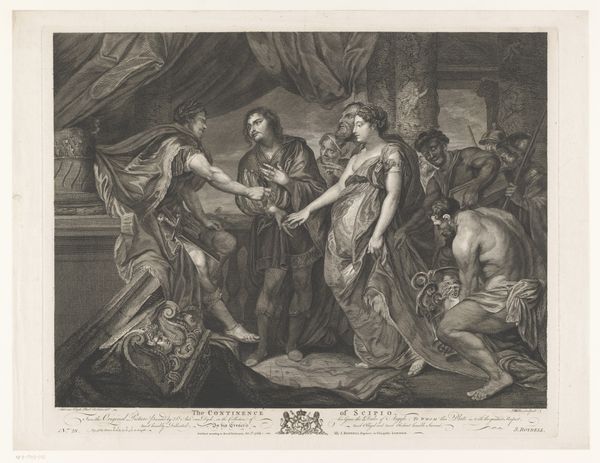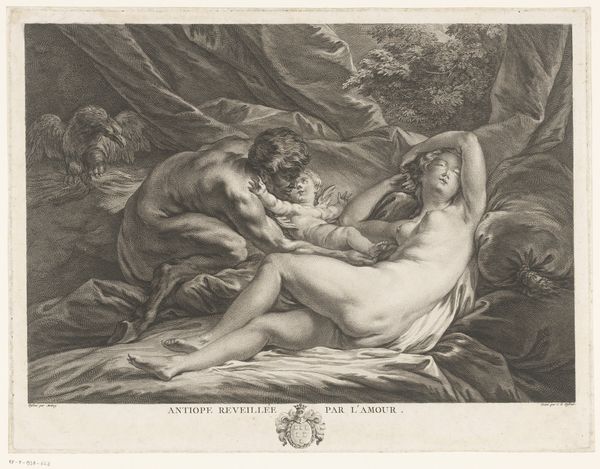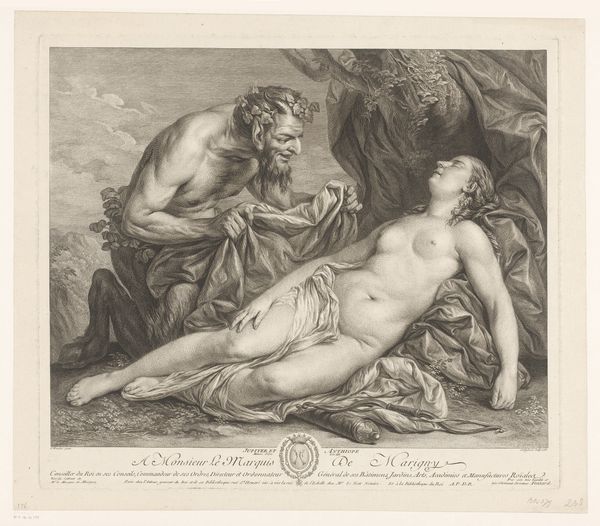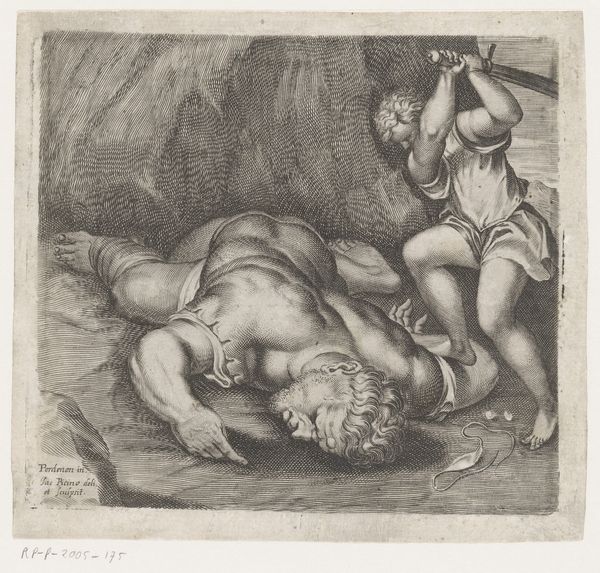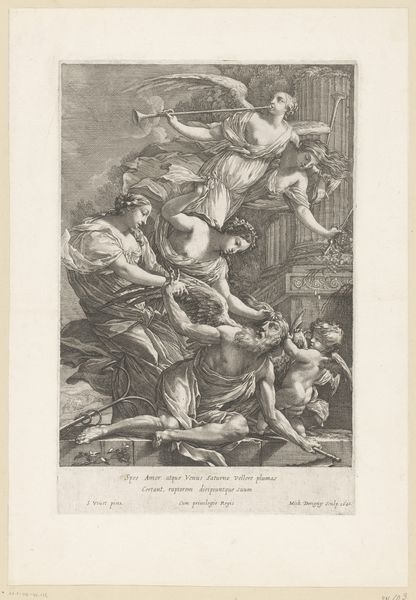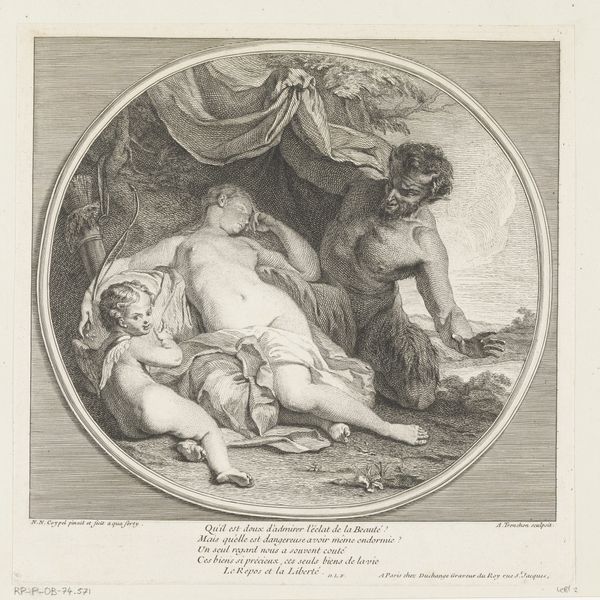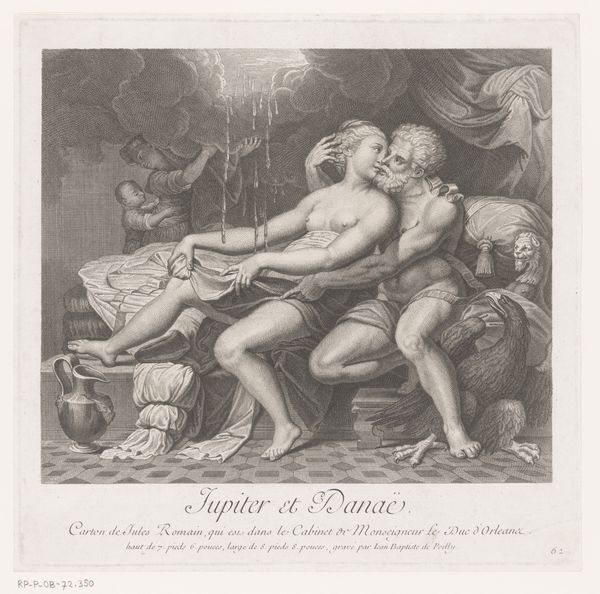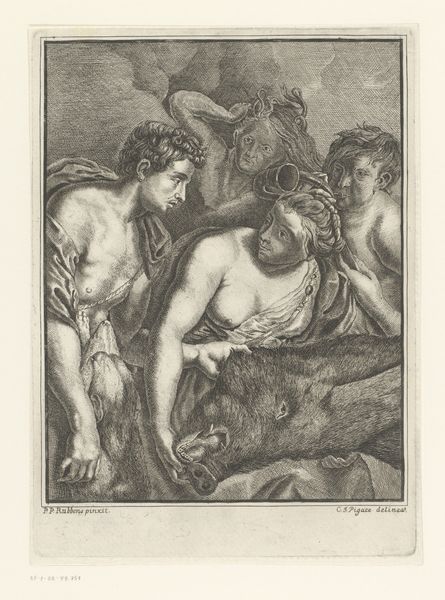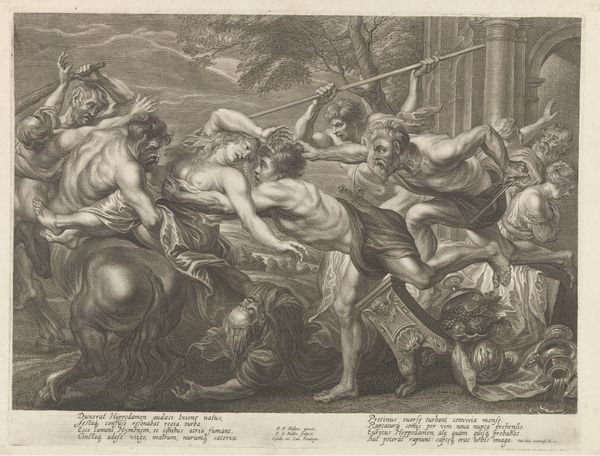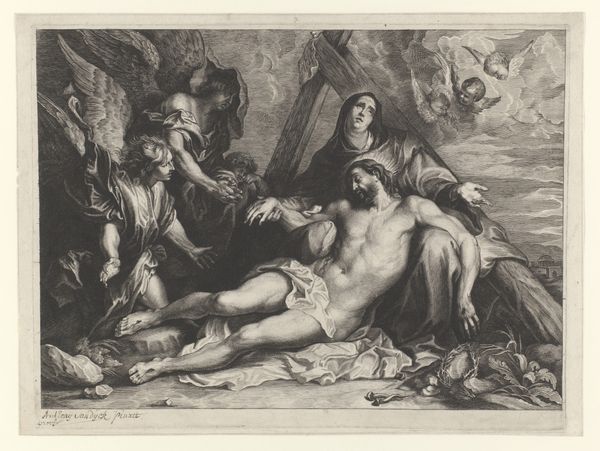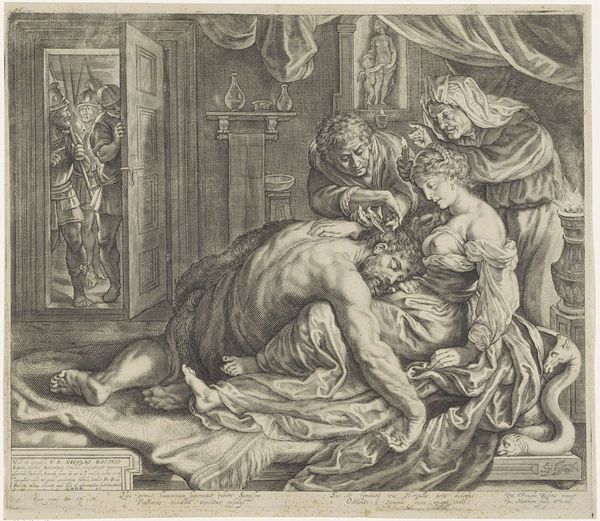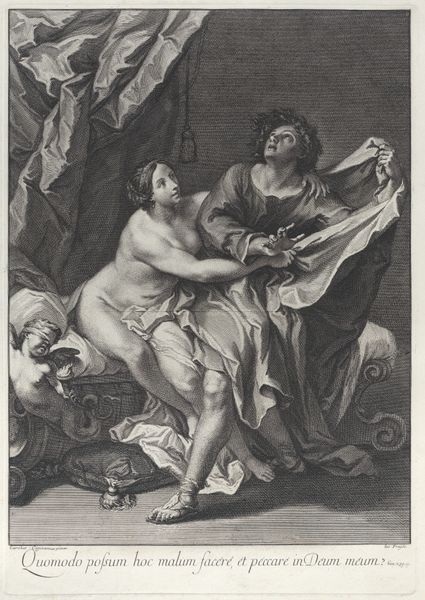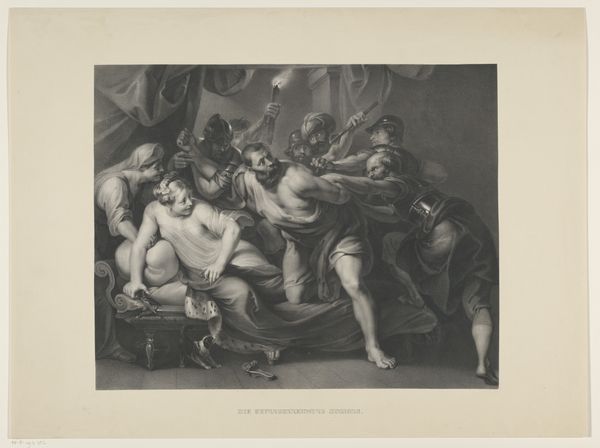
Joseph Interpreting the Dreams of Pharoah's Chief Butler and Baker 1766 - 1767
0:00
0:00
Dimensions: Sheet: 15 3/16 x 19 5/16 in. (38.5 x 49 cm) Leaf: 28 15/16 × 20 1/2 in. (73.5 × 52 cm)
Copyright: Public Domain
Curator: Ribera's "Joseph Interpreting the Dreams of Pharoah's Chief Butler and Baker," created around 1766-67, captures a really intense moment from the Book of Genesis. What strikes you about this engraving? Editor: It's stark, even brutal. The light feels like an interrogation lamp, exposing these vulnerable men. The textures, the strained muscles... it's less about divinity, more about power dynamics, wouldn't you say? Curator: Absolutely. Ribera had a gift for showing the rawness of humanity, both the physical and the emotional. It's not the usual idealized vision you might expect from Baroque art. Notice how Joseph almost seems burdened by the act of interpreting, as if he’s personally suffering along with them. Editor: And who wouldn't be burdened? They are incarcerated and desperate for hope. I wonder how the distribution of light impacts perceptions of culpability and the narrative of injustice. Is it strategic or simply artistic flair? Curator: Strategic, definitely. Ribera had this incredible way of using light and shadow to focus on key elements. Notice the basket of bread at the bottom—a symbol of the baker's grim fate—versus the cup near Joseph, foretelling the butler's redemption. It all points to human destiny in a profound manner. Editor: Those contrasts are sharp. Are we, perhaps, positioned to align with Joseph's clairvoyance? There's an interesting subtext to Ribera’s baroque take; an intersectional view, if you will, to look at class, social justice, and divine interpretation all at once. Curator: Precisely! This isn't just a retelling; it's a commentary. And the medium itself—engraving—makes it accessible. He’s democratizing this powerful biblical story, ensuring it could reach wider audiences. Making people think for themselves. Editor: That’s well said! So this work becomes not just a window into the past, but a mirror reflecting back at our own world. Provoking discussions about who holds power, who suffers, and what – if any – redemption looks like. Curator: Ultimately, it’s Ribera’s skill to humanize the figures involved. Makes one contemplate what we believe, how we see ourselves and each other. It truly transcends the medium and leaves us wrestling with it. Editor: A very potent and complicated gift that this work brings us. Thank you.
Comments
No comments
Be the first to comment and join the conversation on the ultimate creative platform.
